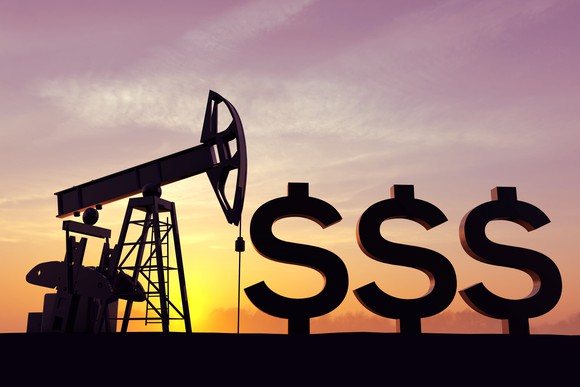The Dow Jones Industrial Average has 20,000 in its sights, and if the exchange eclipses that lofty level, it could send shares soaring even higher. Is your portfolio positioned for upside? Read on to see why I think Celgene Corp. (CELG +0.00%), ExxonMobil Corporation (XOM +2.38%), and Freeport-McMoRan Inc. (FCX +0.59%) are industry-leading, top stocks that can profit from the next 5,000 to 10,000 points in the Dow.

IMAGE SOURCE: GETTY IMAGES.
Big-time biotech
Investors with a penchant for growth at a reasonable price might not want look any further than Celgene. It's one of the world's most successful biotech stocks and thanks to its top selling multiple myeloma drug Revlimid, the company's sales have roughly doubled over the past five years.
CELG Revenue (TTM) data by YCharts
Revlimid isn't the only drug driving Celgene's success, either. The company also markets Pomalyst, a market share leading third-line multiple myeloma therapy, Abraxane, a widely used pancreatic cancer therapy, and Otezla, a fast-growing drug for psoriasis. Overall, Celgene's product line-up is expected to generate $11.2 billion in sales this year, $12.7 billion in sales in 2017, and $21 billion in sales in 2020.
That's an impressive outlook, yet shares are only trading at 17.5 times next year's estimated EPS, and just 9 times management's forecast for EPS of at least $13 in 2020.
Since Celgene's got plenty of growth on tap, a reasonable valuation, and a flurry of drugs in the development, including promising collaborations with bluebird bio and Agios, this is my favorite stock to buy in biotech right now.
Global goliath
ExxonMobil Corporation (XOM +2.38%) is a staple in value and income oriented portfolios, and I think it rates must-have status in any portfolio that includes energy stocks.
In addition to being a global oil & gas exploration and production giant, ExxonMobil operates a big refining and chemicals businesses, and that diversity helps it make money even in tough times. For example, ExxonMobil racked up $6.2 billion in earnings in the first 9 months of 2016, including $2.7 billion in Q3, despite anemic oil & gas spot prices.
ExxonMobil's earnings are impressive considering the headwinds, and they suggest that significant earnings growth could be on tap, if oil and gas prices trend higher. Fortunately, that appears to already be happening. West Texas crude prices are on the upswing, and an increase in the number of active rigs in North America indicates oil and gas producers are feeling optimistic. As of Dec. 16, 637 rigs were operating in North America, up from roughly 400 back in May, reports Baker Hughes.
WTI Crude Oil Spot Price data by YCharts
Since commodity prices are rebounding, and ExxonMobil's shares yield an attractive 3.3%, this comapny is the one energy stock that I think every investor ought to be including in their portfolios.
Copper king
Freeport-McMoRan's $20 billion leap into oil & gas production a few years ago came into the teeth of declining commodity prices, however, the company remains a copper mining dynamo, and a significant restructuring is cutting expenses and increasing profitability.
As part of its restructuring, management has cut net debt to $18 billion, and after selling off non-core assets, net debt could soon fall below $10.7 billion. Savings tied to lower interest expense, coupled with a steady decline in SG&A costs, position Freeport-McMoRan for earnings expansion as copper and energy prices move higher.
In the past 3-months, high-grade copper prices have increased from less than $2.20 per pound to nearly $2.50 per pound, and during that same period, analysts have ratcheted up their EPS outlook for Freeport-McMoran next year to $1.33 from $0.98.Given this company was earning over $2.50 per share less than 3-years ago, this may only be the early stages of an earnings recovery.
Because commodity-friendly infrastructure spending is a major policy platform of Donald Trump, I think Freeport-McMoRan will regain its luster. If I'm right, there could plenty of room for upside in the company's share price. After all, shares were trading in the mid-$30's as recently as 2014, or more than double where they are today.



